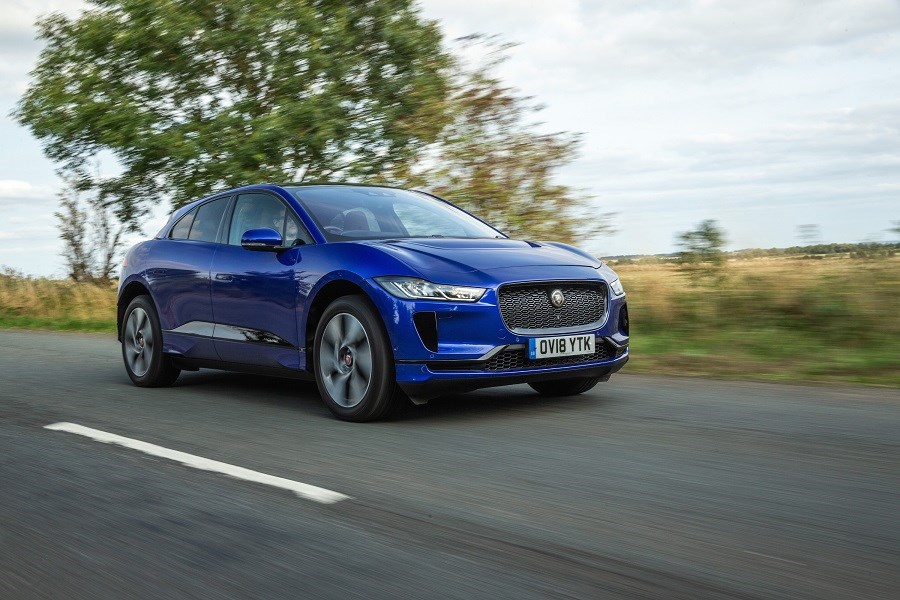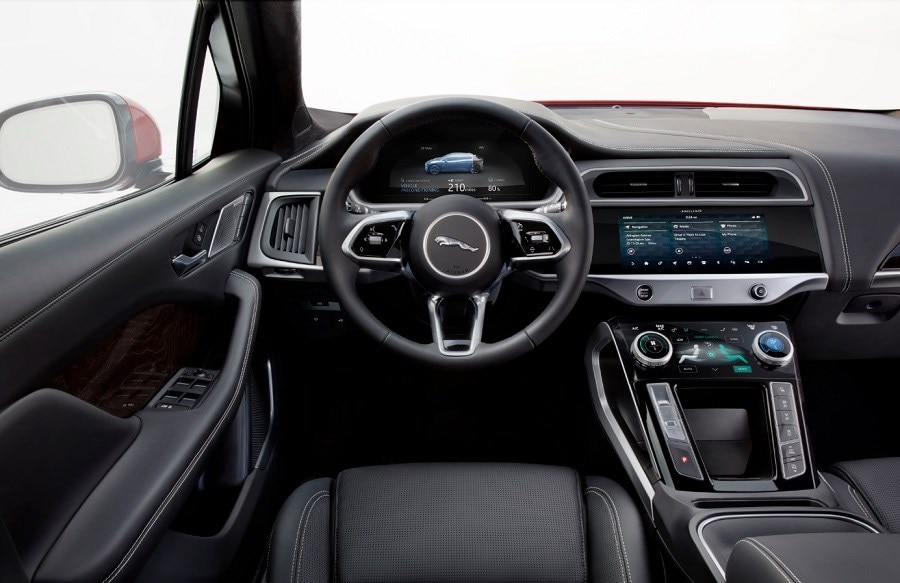Value for money
Prices for the I-Pace look quite expensive on paper, although when you consider the fantastic amount of tech fitted to it, as well as its great performance, it starts to look quite better value for money.
The I-Pace only comes as one variant—the EV400—which costs from £64,495 or £60,995 if you count on the government’s £3,500 electric car grant. There are not too many models to compare it with, but putting it alongside the Tesla Model S and new Audi e-tron are probably the closest comparisons you could make to other models, with the odds being in the I-Pace’s favour.
Standard equipment is also very generous, with all models coming with adaptive LED headlights, a digital cockpit, and a twin-touchscreen setup, to name but a few of its features. It also offers a great electric range, which is something to take into consideration.
At the time of writing, the I-Pace had only been on sale for a few months, with strong demand and lengthy waiting lists helping to keep values up. Nearly-new models were also retailing for more than their original list prices, which just goes to show the buzz the model has created. That initial demand is only likely to last for so long, though, before values start to drop.
Looks and image
The I-Pace is one of the most futuristic models on sale and keeps many of the styling details first seen on the original I-Pace concept car. It’s a fantastically-designed model and is yet another masterpiece created by Jaguar designer Ian Callum and his team. The proportions work perfectly, with small overhangs and a fantastic stance on the road, although thanks to the firm’s trademark grille and front and rear lights, it’s unmissably a Jaguar, which was an important aspect of the I-Pace.
The interior isn’t quite so bold, although the twin-touchscreen setup undoubtedly adds plenty of modern flair to the interior. But don’t worry, it’s still very stylish with its de-cluttered layout and use of leather or suede throughout the cabin. But what’s refreshing about the interior is that it doesn’t give you any clues about the I-Pace’s EV nature, with a discreetly-styled interior, and exterior too, for that matter. There are no gimmicks, just a well-thought-out dash which feels superbly well-built and using the best materials.
However, one standout area of the I-Pace which really impresses is the way it drives. It’s perhaps the best electric car to be behind the wheel of yet, and even with all those heavy batteries underneath it, it feels poised, agile and handles with hardly any body lean. There are also superb grip levels, too, thanks to an advanced all-wheel-drive system that can instantly send the power to the wheels which need it most. The only slight issue is with the ride, which just feels a touch too firm around town, although it’s by no means uncomfortable. The effortless acceleration from the I-Pace is also one of its stand-out features and makes the I-Pace feel every inch as good to drive as a Tesla, even if the acceleration figures don’t quite match it. The regenerative braking can make the brakes difficult to adjust to, with the anchors either feeling like they’re doing an emergency stop or doing nothing at all, but after a few drives, you soon adjust to them.
Space and practicality
From the outside, the I-Pace doesn’t look that big. It’s similar in length and width to the manufacturer’s XF saloon and is nowhere as imposing or as wide as the Tesla Model X. It’s no Tardis, but it’s still a practical model that would serve perfectly as a family model.
No gearbox means that you don’t have a transmission tunnel to interfere with rear floor space meaning that three adults can sit quite comfortably across the rear bench with plenty of headroom and legroom, although shoulder room isn’t quite as generous.
Unlike other electric models which have a limited amount of boot space thanks to the additional space taken up by the batteries, the clever packaging of the I-Pace means that there’s no shortage of boot space. It offers 656 litres, or 1,453 litres if you fold the rear seats down. There’s also the advantage of a little cubby hole under the bonnet to store small items, although it can’t handle much more than a small shopping bag.
The I-Pace was crash tested by the safety expert’s Euro NCAP not long after its launch, and scored an impressive five-star rating, with high marks recorded in all categories. A generous amount of standard safety kit is also offered – including traffic sign recognition, lane-keep assist, a driver condition system that can sense if a driver should stop and take a break, as well as adaptive LED headlights and a reversing camera.





